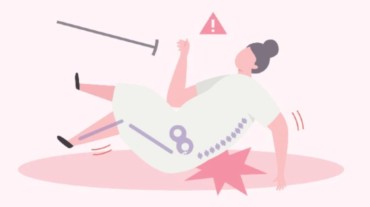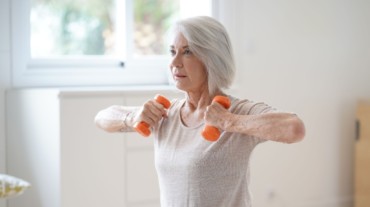
Bones play a vital role in the human body – from protecting organs to storing calcium. Experts say it is important to build strong and healthy bones at a younger age only. But if you have elders in your home who are having trouble with their bones, ensuring some vital things can keep them in better health.
Due to osteoporosis, many people lose their bones while getting old. And in this condition, bones become weak. It becomes difficult to heal a broken bone after an osteoporotic fracture. According to statistics, the population above the age of 50 tends to break their bones easily. It is seen that 1 in 2 women and 1 in 4 men fracture their bones due to osteoporosis. Hence, it is important to take care of the bones as an ages.
There are certain factors that might also act as catalysts for increasing the risk of early osteoporosis. Improper diet, lack of physical activity, being underweight, smoking and drinking, irregular hormonal levels, and intake of certain medications are some common examples of risk factors.

So, if there’s an elderly member in your family, you must take care of the following to ensure healthy bones.
Vitamin D serves a variety of functions in the body. It keeps the bones healthy by helping the body absorb calcium and micronutrients, vital minerals for bone health. Have foods that are rich in calcium and vitamin D in the diet. For example, low-fat dairy, soy milk, green leafy vegetables, leguminous pulses, salmon, nuts, and also milk and dairy products are the best sources of calcium. They contain a form of calcium that the body can absorb easily. Choose yogurts, cheeses, and buttermilk which are good sources of calcium. Experts suggest that an individual should get at least 5 to 10 minutes of sunlight exposure for 2 or 3 days a week.
Exercise is essential for overall health, including bone health. Physical activity causes the body to build muscles and encourages better balance, which can help prevent falls and fractures. Any sort of exercise is beneficial, but to stimulate bone health, focus on weight-bearing exercises such as fast walking, trekking, jogging, or climbing stairs. Avoiding certain risk factors for osteoporosis is also an important component of a healthy bone diet.

Maintaining a healthy lifestyle is more important while getting old, Smoking has several health consequences, including the risk of having lung cancer and stroke. It also increases the chances of osteoporosis by slowing the production of cells that assist in the formation of bone. Similarly, excessive alcohol consumption can weaken the bones by interfering with osteoblasts, or bone-growth cells. Moreover, excessive drinking can increase the risk of falling, which can result in fractures if they have low bone density.
A balanced meal with a variety of foods will help build healthy bones. When you get older, the body needs sufficient calcium to maintain the strength of the bones. Women lose bone more rapidly for a couple of years after menopause when the ovaries almost stop producing estrogen, which has a survival benefit on bones.
A healthy and balanced diet, which is inclusive of calcium and vitamin D in the form of natural sunshine and supplements, can aid slowdown of how quickly one suffers bone loss during menopause.

Maintaining good bone health begins at an early age. Bones develop quickly during childhood and adolescence but bone gets weak after a certain age. These are critical years for bone development. A properly balanced diet with a high intake of calcium-rich foods and a minimum of one hour of physical exercise every day helps to maintain good bone health.
Select Topics of your interest and let us customize your feed.
PERSONALISE NOWIndividuals over 40 must also include healthy lifestyle practices. While getting old, routine bone density tests and medical check-ups with doctors help prevent excessive bone density loss.
To avoid osteoporosis, a bone density scan is often suggested by a doctor. With the help of this test, doctors can evaluate the information and the risk factors, and help in assessing the medications and more that can be prescribed to the individual.